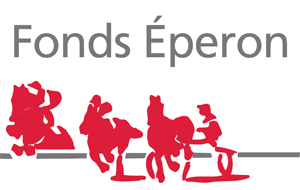The helpful horse (Social-Educational-Therapeutic )
Horses are used for several purposes :
- Sport and leisure,
- Therapeutic and reeducative,
- Specialist education,
- Social and professional insertion.
Each of these aspects requires different knowledge and practice. It is aimed at people with :
- A mental handicap or personality disorder,
- A physical or sensorial disability,
- Behavioural difficulties leading to social maladjustment.
Under the joint responsibility of professionals in the paramedical field and equestrian fieldt.
A few figures
- In France: two people in 10 have a health problem or are disabled; protection of children and dissocialised people rises by 1.5% to 2% per year.
- Around 100,000 to 150,000 people in difficulty each year benefit from contact with horses, whether it be for the purpose of care, reinsertion, sport or leisure.
- In France, for over 20 years now, around two hundred people per year, from the world of horses or the world of medicosocio-education have undertaken training to support the disabled or people in difficulty in therapeutic activities with horses.
The draught horse, the calm and nurturing favourite
Since its creation, 100 disabled people and people in difficulty have taken part in the Fish Run as part of a real project for living and well-being which goes beyond sport and leisure.
Draught horses are most often used as :
- Driven horses: a discipline best suited to the severely disabled or teamwork (means of socialisation) ;
- Riding ring horses: the back is sufficiently wide to reassure people, who can ride several at a time.
Advantages of draught horses :
- A calm, easy-going and willing character,
- A specific morphology: they can carry and pull, ideal for transporting heavy people and/or those with reduced mobility,
- Adaptability to all environments,
- Varied uses: leisure, sport and sleigh driving, bareback riding, long reins, riding, etc.
The draught horse’s limit remains its size, which is less suited to being saddled so is preferred as a driving horse.
Today they are vectors for social and professional insertion as part of departmental or regional projects, at the service of local development, with the special interest of integrating people in difficulty.

 Contact
Contact

